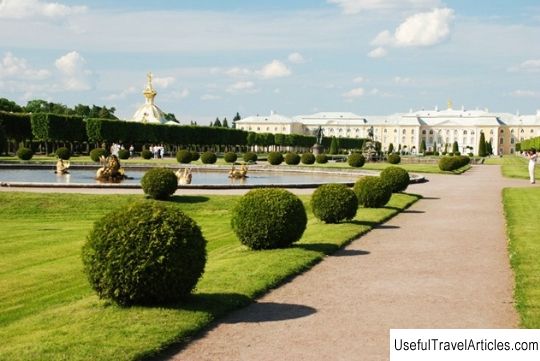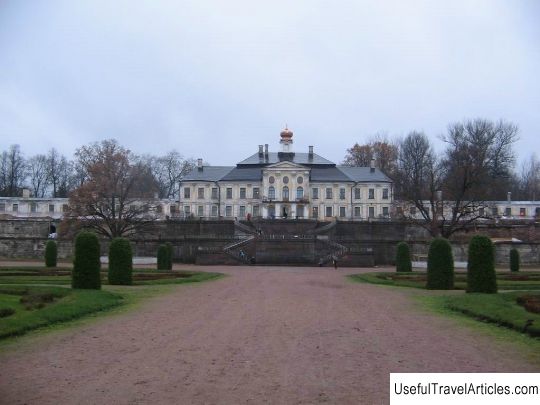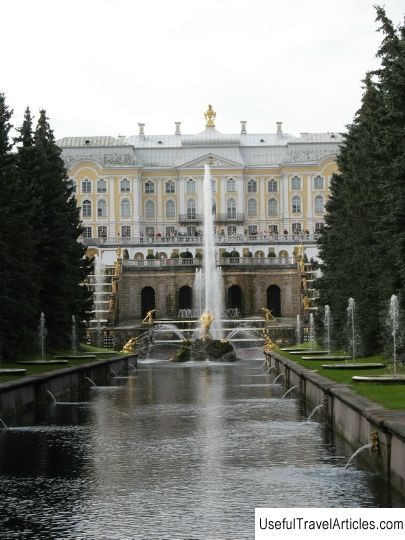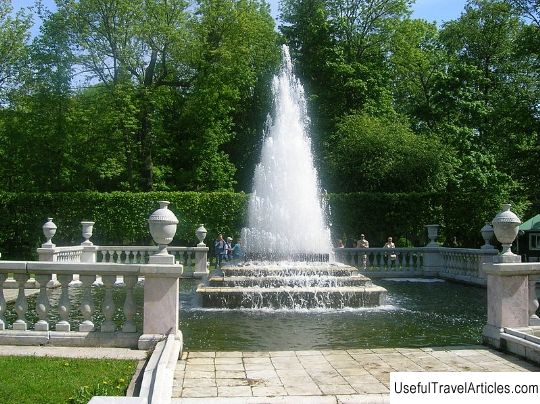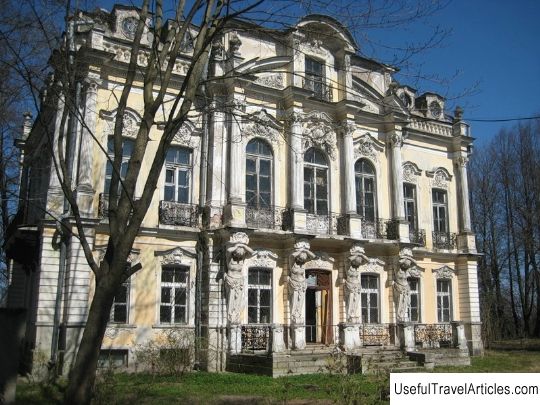Lower park description and photos - Russia - St. Petersburg: Peterhof
Rating: 8,5/10 (2143 votes) 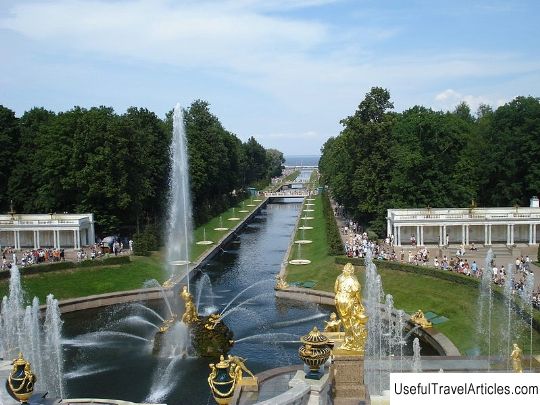
Lower park description and photos - Russia - St. Petersburg: Peterhof. Detailed information about the attraction. Description, photos and a map showing the nearest significant objects. Photo and descriptionThe Lower Park is the most famous part of the Peterhof palace and park ensemble. It was the Lower Park with its magnificent fountains, sculptures and architectural monuments that brought the museum world fame. The Lower Park was laid out like the Versailles country residence of King Louis XIV of France in the French style that was fashionable in those days, which is also called differently regular. Distinctive features of the regular style are the geometrically verified and strict layout of the alleys, exquisitely correct drawings of huge flower beds, figured shearing of bushes and trees, graceful pavilions and rich sculptural decoration of the park. The basis of the entire composition of the Peterhof ensemble and its future development were determined by Peter I. His sketches served as a source material for drawing up the general plan of the park by the architect I. Braunstein. Until now, documents have come down with instructions from the emperor on how to run alleys, what tree species to plant, how to carry out a drainage system. In memory of the founder of the residence, beautiful tulips are blooming every spring near the Monplaisir Palace, the most beloved palace by Peter. The Grand Palace is the architectural center of the Peterhof ensemble. It rises 16 meters above the narrow belt of the Lower Park, which stretches for two kilometers along the Gulf of Finland. The park is divided into two almost identical parts by the strict line of the Sea Canal, which goes from the Grand Palace to the Gulf of Finland. On both sides of the canal there are large flower beds, from which, in both parts of the park, four fan alleys extend symmetrically. The eastern alleys lead to the Monplaisir palace, and the western ones lead to the Hermitage pavilion. In the west of the park, another system of alleys begins, at the Marly Palace: three roads from west to east cross the entire park. The lower park includes several independent architectural and park ensembles, each of which necessarily includes a palace, fountains, parterres and utility corners. These include: the Grand Palace with a cascade, flower beds and a canal (this is the central ensemble), the Big Greenhouse with greenhouses, an orchard, the Marly Palace with fish ponds, orchards and vegetable gardens and the Monplaisir Palace with greenhouses for herbal herbs with a garden. Several ponds were dug to drain the park area. They harmoniously fit into the layout of the park ensemble. In addition, they had another practical meaning - valuable fish species were bred here to serve on the king's table. When the park was just breaking up, small groves that existed here in a forest area were included in the park landscape. But the basis of the green spaces of the Lower Park was the planting of different types of trees, which were brought both from different parts of Russia and from abroad. Both green `` halls '' and covered alleys were decorated in a regular style, gazebos were decorated, trees were trimmed figuratively, and thermophilic plants were grown in tubs in a greenhouse. Master gardeners laid out numerous parterre flower beds with intricate patterns, decorated places along the canal, around fountains, in front of the Monplaisir Palace and other buildings in the park. The idea of those parterres that existed in the 18th century. we are given Large flower beds, which are located on both sides of the Grand Cascade. During the Great Patriotic War, Peterhof was on the front line, and the Lower Park was severely damaged. After the end of the war, after dismantling the rubble and clearing the territory of the park, major restoration work was carried out: young trees were planted, flower gardens were recreated near the Monplaisir Palace, the Chess Mountain cascade, the Grand Palace, elements of the regular park were revived. Restoration work in the park continues to this day. Nowadays, in the Lower Park, mainly oaks, lindens, ash trees, maples, spruces, birches, black alder, individual specimens of fir, chestnuts and larch trees grow. The flower arrangement is characterized by a large number of bulbous plants, roses, medicinal aromatic herbs. The large park area contains numerous picturesque corners. But its unique fountains brought world fame to the Peterhof Lower Park.              We also recommend reading St. Nicholas Church on Grigorovka description and photo - Ukraine: Kharkov Topic: Lower park description and photos - Russia - St. Petersburg: Peterhof. |
